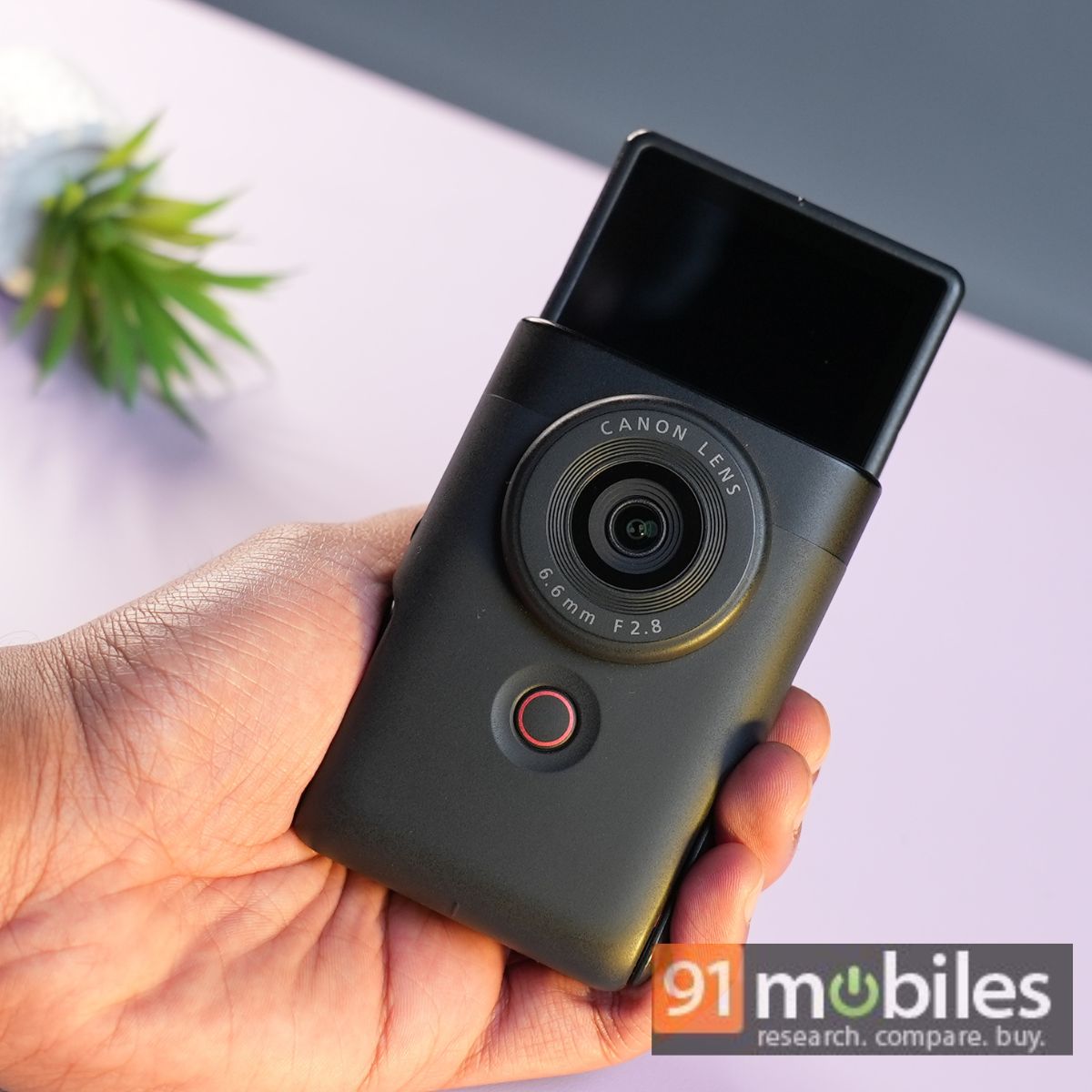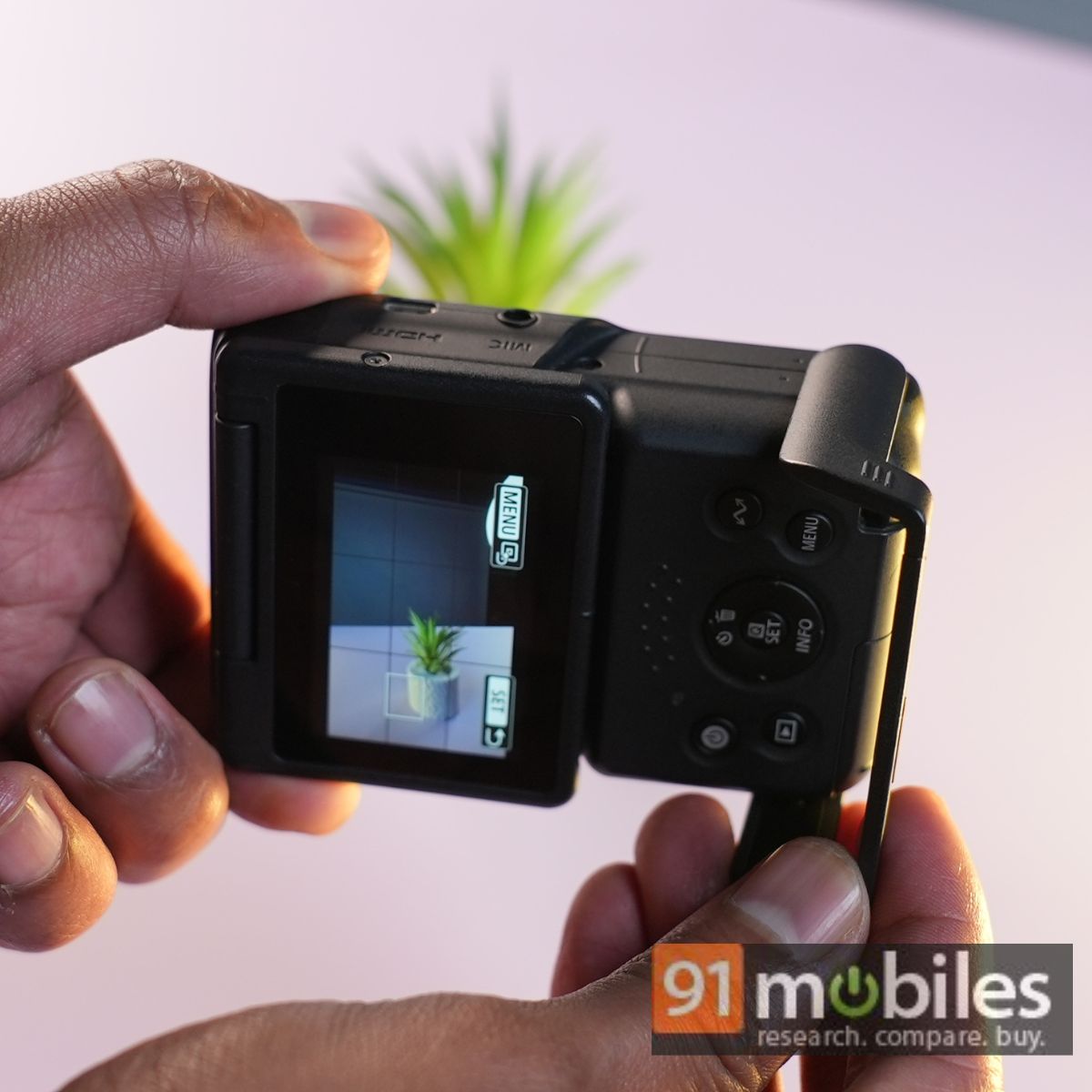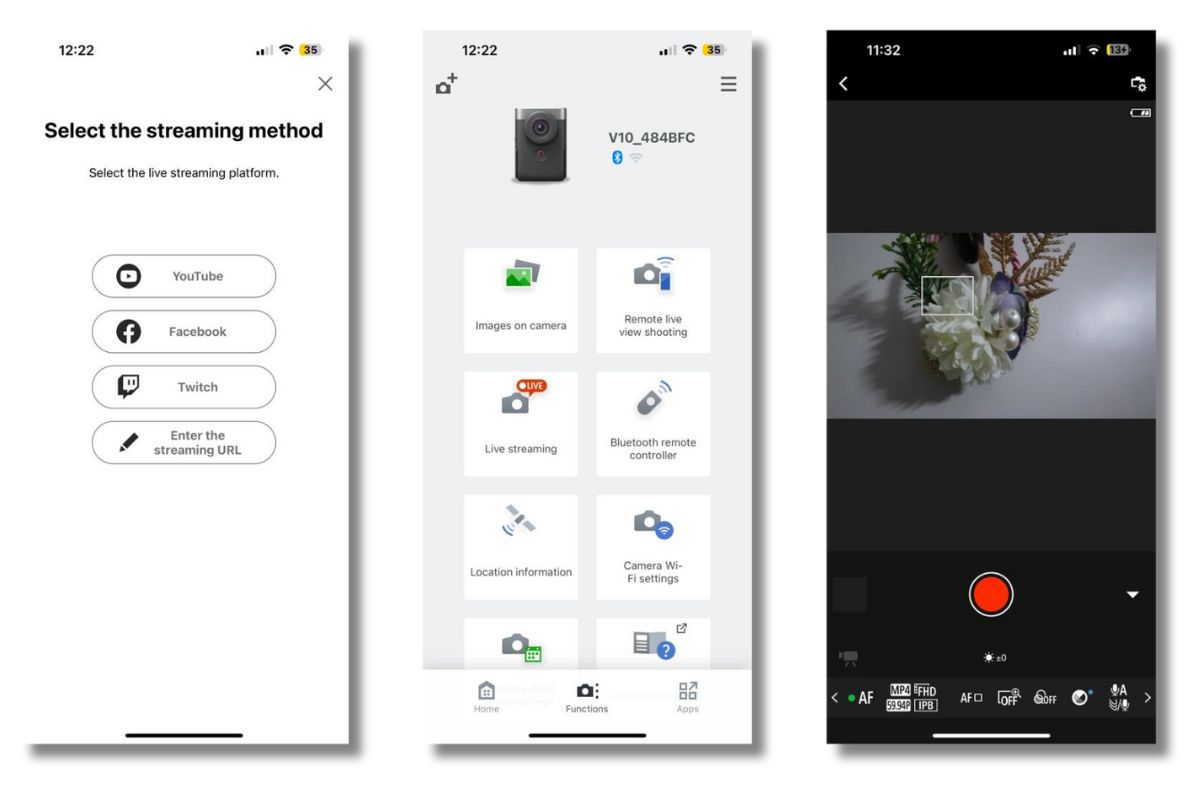Canon’s PowerShot V10 is an entry-level vlogging camera that aims to replace your smartphone for shooting videos, at least if you’re an upcoming or semi-professional content creator. It features a smartphone-like design with a throwback touch-enabled flip display. There’s also a built-in stand to mount the camera on a flat surface, which most smartphones won’t allow without a tripod. Moreover, the camera comprises a large 1-inch sensor with an f2.8 aperture that should allow ample light to enter for those crisp and vibrant shots.
After using the Canon PowerShot V10 for a lengthy period, there’s no doubt that it is a reliable vlogging camera, and is especially useful in some tricky situations. It may not be as versatile as a premium smartphone, like the Samsung Galaxy S23 Ultra (review) or iPhone 15 Pro Max (review), but that shouldn’t be a big issue considering its price tag of Rs 39,995 (MRP). But is it good enough for you to get started if you’re an upcoming content creator? Let’s find out.
Design
At first glance, the Canon PowerShot V10 will likely remind you of point-and-shoot digital cameras with a twist. It weighs roughly 211 grams, nearly 10 grams lighter than the iPhone 15 Pro Max and 23 grams lighter than the Samsung Galaxy S23 Ultra. This also makes it substantially lighter than most professional-grade cameras.

The size of the Canon PowerShot V10 is compact, making it easier to carry in your pocket or a tiny pouch. The build is mostly plastic, which explains the weight. I find the design thoughtful as it resembles a smartphone, something most of us are familiar with these days. The compact build also makes it less intimidating in public places, which is generally not the case with chunky professional cameras.
Due to its small design, Canon has fully utilised every corner to pack as many buttons and ports as possible without ruining the aesthetics. While the front features a clean appearance with only the big non-removable lens staring at you, the back includes all the necessary buttons to shoot. The side carries the USB-C charging port, which I greatly appreciate. We also get an HDMI 2.1 slot alongside an input for the microphone.
Another distinct feature of the Canon PowerShot V10 is the 360-degree rotating built-in stand that rests underneath the display. It can be a tad cumbersome to use it at times, as you will first have to flip open the display. Once you’re used to this tedious process, the stand can be adjusted at various angles, making the camera highly useful in many situations, including taking video calls with this camera. Otherwise, there’s also the option to mount the camera on a tripod.

While I am mostly happy with the design, the display gets mixed reactions. It’s worth noting that the flip-style display on the camera is not only a nostalgic feature, but it can be very helpful for taking self-shots. The size and touch response of the display will also satisfy most users.
However, the thick bezels around the screen can substantially impact the viewing experience. The brightness of the roughly 2-inch display (50.8mm) could’ve been better, though its colour calibration is mostly good. It’s also best to be cautious when flipping the display out, as Canon has not provided any specific details about its hinges. Users also have to be careful while using the camera on a rainy day since there is no IP rating.
Camera performance
As the Canon PowerShot V10 is primarily designed for entry-level vloggers, operating it is fairly straightforward. The access to filters and other settings is also easy to navigate, exactly how you’d want if you’re new to the vlogging game. The PowerShot V10 allows up to 4K resolution videos at 30fps, while 60fps is restricted to Full HD resolution. Images can be up to 15.2-megapixels (effective) with an ISO of up to 12,800.

By default, the PowerShot V10, with a 25.4mm CMOS sensor and a proprietary DIGIC image processing engine, prioritises warm tones. Most of the still images I took — be it indoors or under bright conditions outdoors — include a mild orangish hue. The photos with warm tones may look pleasing to the eye, but they come at the cost of inaccurate colours. In my case, it got more apparent with my skin tone.
The issue of colour grading is fixable with some simple editing. Fortunately, both images and videos from the PowerShot V10 include good details, especially in daylight, but the camera does not offer a rich blurry effect that most of us, including myself, love. Contrast levels and shadows can be a hit-and-miss, which I feel has more to do with the processor than the camera lens or sensor.
I tested the results with an iPhone 14 Plus. Although the iPhone captured sharper details in the photos (visible after zooming in), the more affordable Canon PowerShot V10 was not far behind. Additionally, the Canon PowerShot V10 allows you to take high-resolution screen grabs from the video footage.




Capturing videos with the Canon PowerShot V10 can get tricky in dynamic situations. The lack of OIS (optical image stabilisation) support results in shaky video footage. But if you want to take static shots for those GRWM (get ready with me) Instagram reels and more, the PowerShot V10 is highly useful. The built-in stand also makes the camera more versatile for recording videos at the gym or while cooking.
In dim conditions, you may need to play around with the ambient lights to get the best results. Otherwise, the shot will include grains and muted colours.
App support
The Canon PowerShot V10 can also be managed via the Canon Camera Connect app for Android and iOS.

The app lets you:
- Transfer photos and videos from the camera to the connected smartphone via a local connection.
- Set up live streams on Facebook, YouTube, and Twitch.
- Use the phone screen as a viewfinder.
- Use the phone as a Bluetooth remote.

While all the app features are functional and, frankly, necessary for beginners these days, there’s a lag problem between the Canon Camera Connect and PowerShot V10. There’s also the problem of abrupt connection drop between the phone and the camera. To be fair, this is a common problem with mobile apps provided by all major camera manufacturers, including Nikon and Sony. But this does need to be fixed.
With the Canon Camera Connect app, Canon could also explore the idea of offering AI-powered editing tools similar to that of GoPro’s Quick app. Even DJI includes a host of templates to help users get started with different camera modes and angles.
Battery
If you capture images at a per-minute interval, the likelihood of encountering heating issues is significantly reduced. Continuous 4K recording on the Canon PowerShot V10 may persist for 30 minutes before shutting down due to overheating. On the other hand, continuous Full-HD videos can extend up to an hour before the overheating warning activates.

The Canon PowerShot V10 also allows up to 2.5 hours of full HD recording on a single charge. Charging the camera with a 33W OnePlus charger took approximately an hour. There’s no charging brick in the box.
Verdict
The Canon PowerShot V10 has several features which make it a fun vlogging camera for beginners or upcoming content creators. As mentioned earlier, it may not be as versatile as a premium smartphone (say iPhone 14 or iPhone 15), but there are some situations where the PowerShot V10 excels.
If you want a dedicated device for those fast-paced Instagram Reels and YouTube shorts, the PowerShot V10 can be your best friend. Even for live streaming, the PowerShot V10 is a great companion.
However, for long videos, you may want to up your budget and likely get a more powerful camera, like a Sony ZV-1 II. That being said, Canon must also address the lag between the Canon PowerShot V10 and the Canon Camera Connect app. The next-gen model can also improve thermals to allow longer continuous 4K recording.
Editor’s rating: 7.5 / 10
Pros
- Compact design
- Built-in stand for self shots
- Reliable for short videos
- Simple interface
Cons
- No 60fps at 4K resolution
- Average video stabilisation
The post Canon PowerShot V10 review: can this vlogging camera up your Instagram game? first appeared on 91mobiles.com.
0 Comments